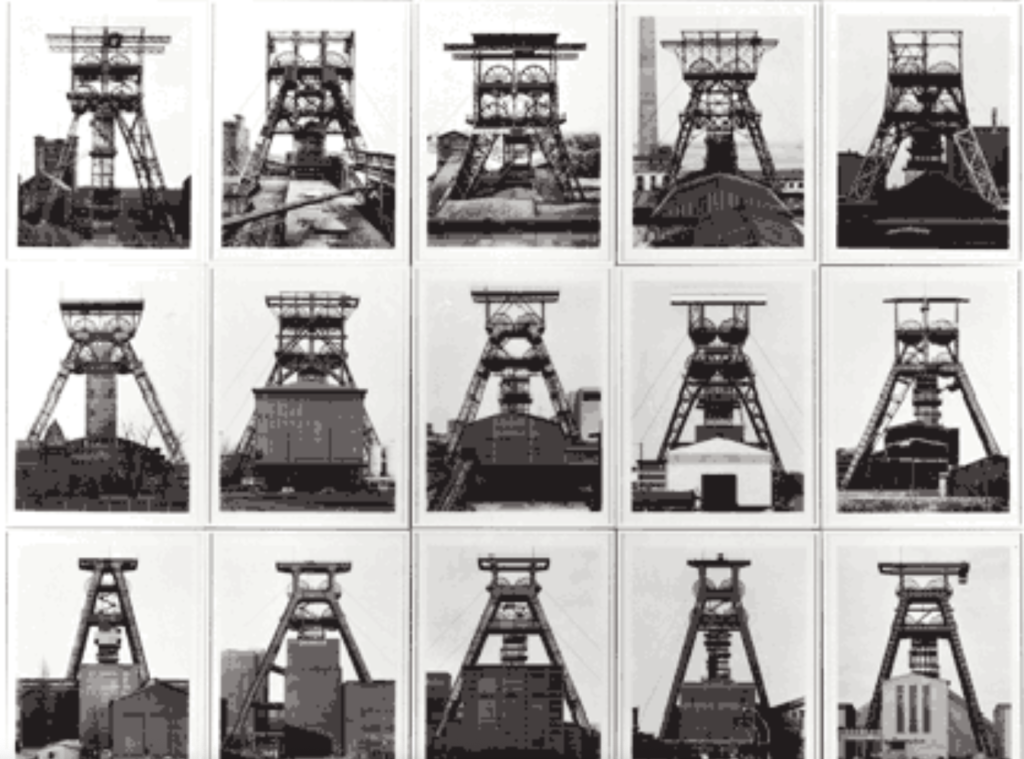A photographic typology is a single photograph or more commonly a body of photographic work, that shares a high level of consistency.
The German artists Bernd and Hilla Becher, who began working together in 1959 and married in 1961, are best known for their “typologies”—grids of black-and-white photographs of variant examples of a single type of industrial structure.
The term ‘Typology’ was first used to describe a style of photography when Bernd and Hilla Becher began documenting dilapidated German industrial architecture in 1959. The couple described their subjects as ‘buildings where anonymity is accepted to be the style’.

WHAT WAS THEIR LEGACY?
Bernd and Hilla Becher
They were often labelled as conceptual artists and influenced minimalist and conceptual artists like Ed Ruscha, Carl Andre and Douglas Huebler.
As professors of The Dusseldorf School of Photography, they influenced a generation of German photographers who were their students (including Andreas Gursky, Candida Höfer, Thomas Ruff and Thomas Struth.)

WHAT WERE THE COMMON THEMES?
Overlooked beauty and the relationship between form and function. Both subjects addressed the effect of industry on economy and the environment.
In my opinion typologies is an interesting topic due to you being able to see different versions of the same thing and how one thing can be interpreted differently but they are still so similar in their ways from their looks to the functions they do, they all do the same thing but the architecture is different.
